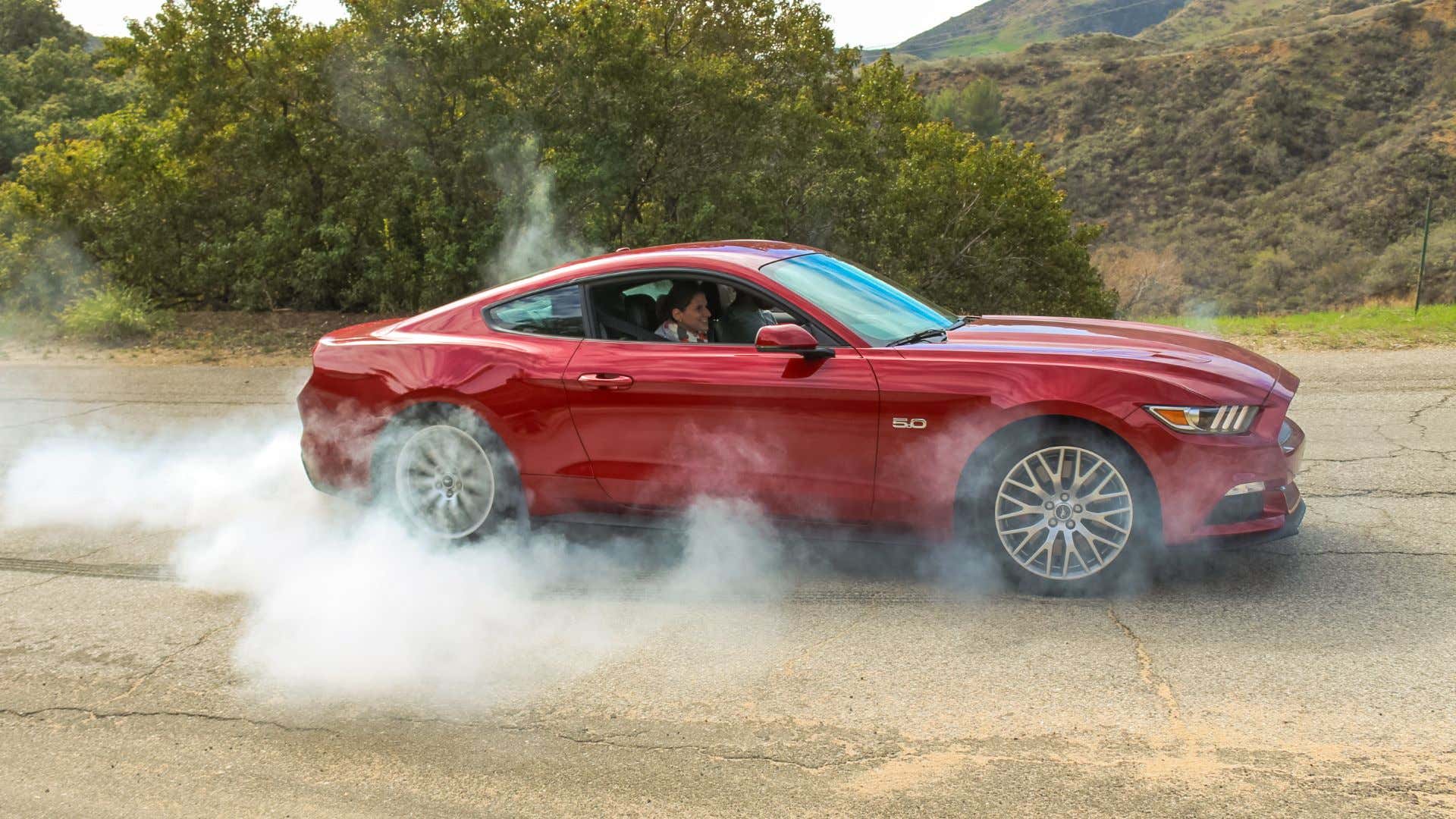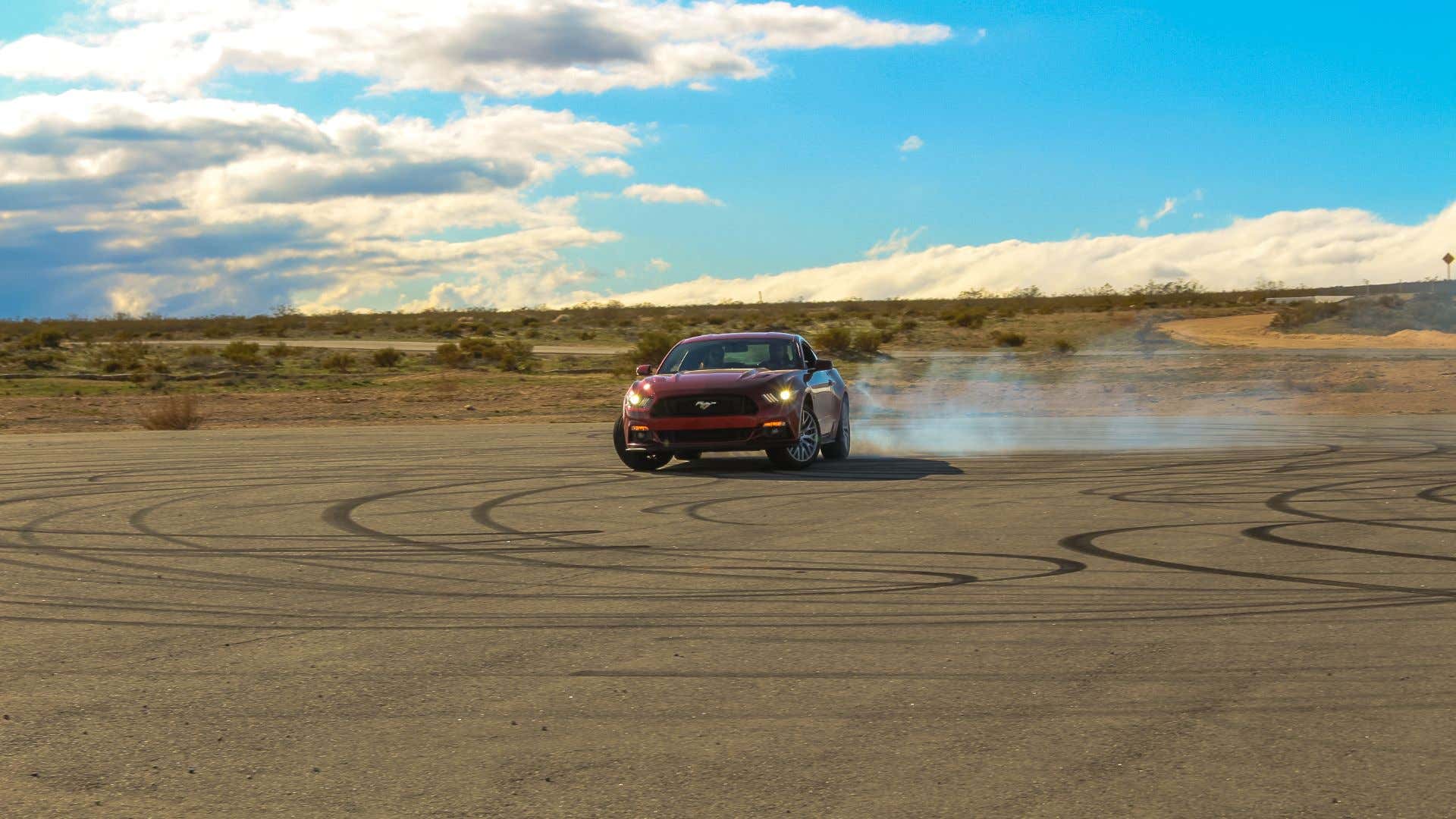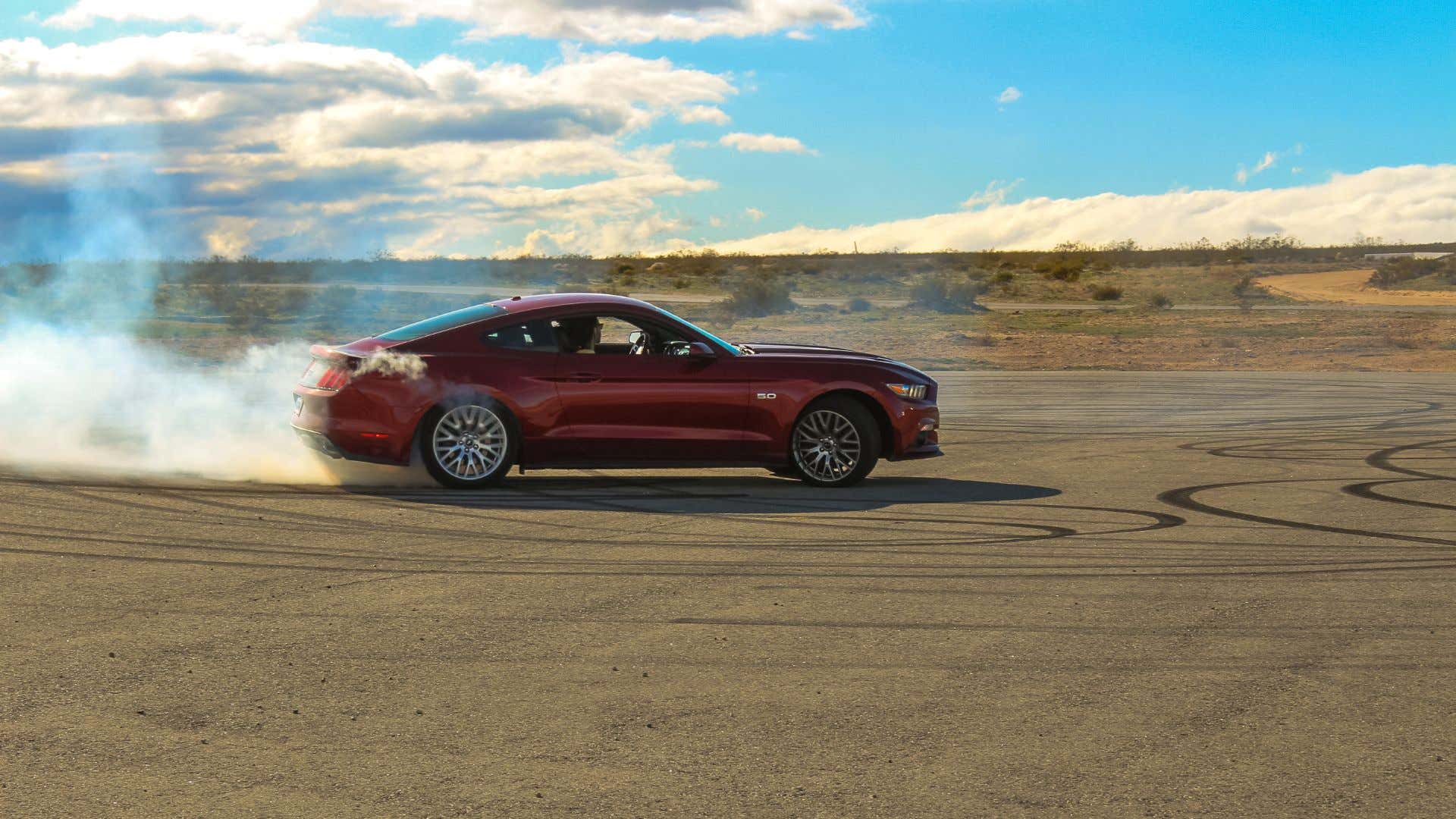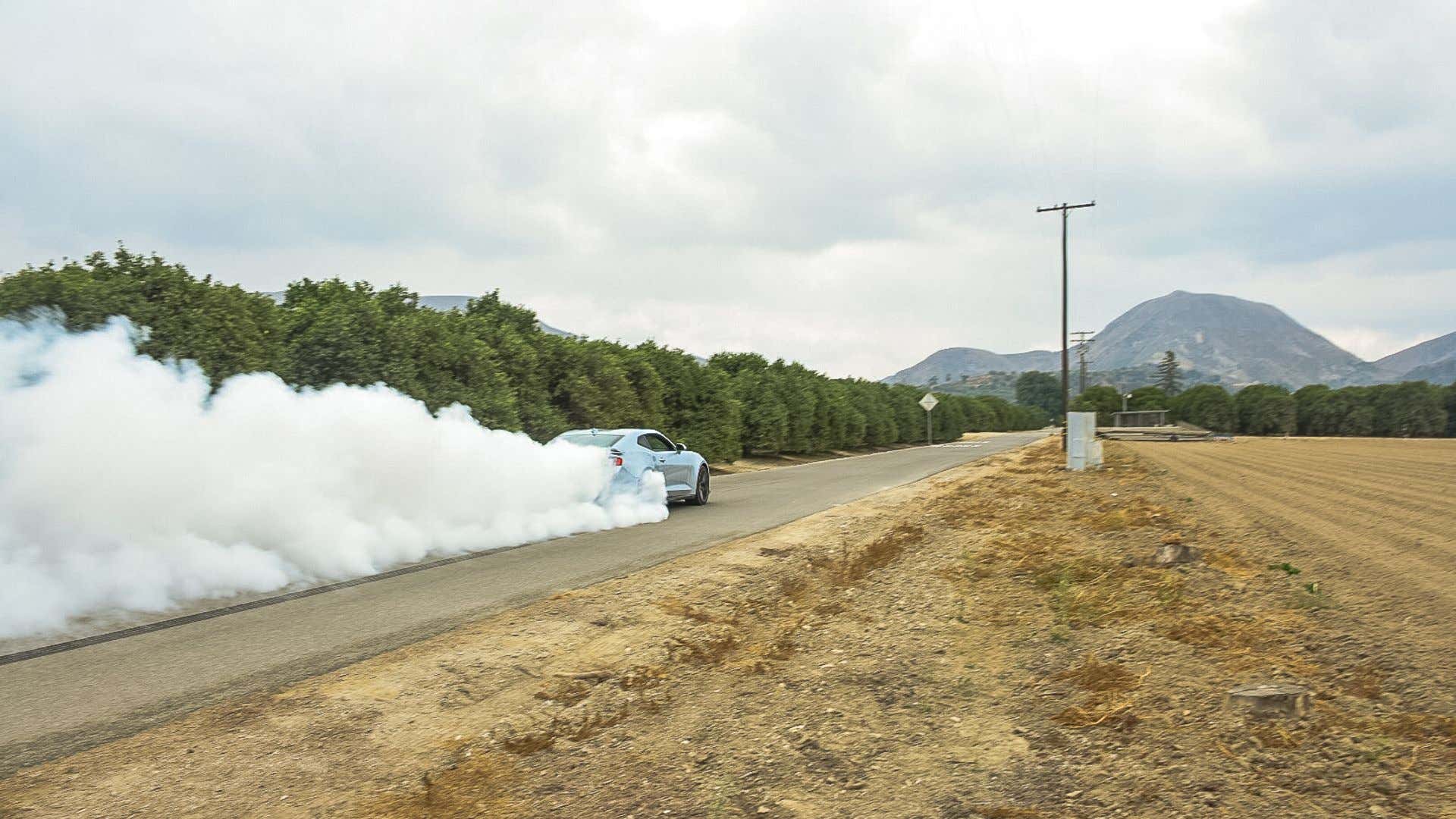The Drive and its partners may earn a commission if you purchase a product through one of our links. Read more.
The world outside your garage is an inhospitable place, with rain, sleet, mud, snow, blizzards, ice, hail, and all sorts of hazards trying to send you into a nearby tree. That’s why traction control was invented.
There are a handful of safety systems in your car, and one of the most important features is your car’s traction control. It’s something you never really think about, yet for most who reside where the weather actually occurs, sorry Nevada, traction control is absolutely essential to your safety and your car’s continued functioning.
But many don’t know how traction control works? When was it invented? Why you still need it? Or where’s the button to turn it off?
Luckily for you, you have The Drive’s fast-footed editors who know all about the history and application of traction control. So sit down, buckle up, and hold on as we take you through everything you’ve ever wanted to know about traction control.
Traction control? Yes, it’s off here.
What Is Traction Control?
At its simplest, traction control is an automated system that reduces the vehicle’s power to specific wheels when wheel slip is detected. So, when you floor it on snow and nothing happens, apart from the traction control light disco-ball flashing at you, that’s what’s occurring.
How Does Traction Control Work?
Traction control works in a few different ways depending on the manufacturer. Some, like a handful of supercar manufacturers, drop in wildly complicated systems, some of which are integrated with the vehicle’s stability control and include yaw, pitch, and roll controls, as well as hydraulically-actuated sway bars, brake and torque-vectoring, and mid-air jump controls.
The most widely used traction control systems, however, either apply the ABS to the slipping wheel or reduce the engine’s power when wheel slip is detected. These systems retard one, two, three, or all four wheel’s power, depending on the vehicle’s drivetrain, when a wheel loses traction.
This is all in an effort to both mitigate slip and aid in propelling the vehicle in the direction of travel. You know, actually being able to drive the car whenever the weather turns into a blizzard. Hooray for traction control!
Both traction control AND stability control are off here.
What’s the Difference Between Traction and Stability Control?
These two systems go hand-in-hand but aren’t the same thing, despite what you may have heard. As stated, traction control regulates wheel slippage and helps maintain traction in low-traction environs. Stability control, however, keeps the vehicle’s yaw, pitch, and roll control. Simply put, stability control keeps your car going in a straight line even in inclement weather or low-traction situations.
For most, these systems are there to save your butts when the weather goes bad, but for enthusiasts, they’re also there to make you feel like a driving god. Enthusiasts benefit from traction and stability control, as they’ll keep them on track, on the racing line, and out of the tire barriers or away from a road’s cliff, even with the wrong inputs.
What Are All-Season Tires?
All-season tires have been around since the late 1970s when Goodyear introduced a tire designed for year-round use. They’re capable of handling wet or dry roads, and can even perform safely in light snow. All-season tires are designed to operate in a wide temperature band, but not at the extremes in either direction.
What Are Winter Tires?
Winter tires are made from special rubber compounds that are designed to stay pliable and provide grip even when the thermometer dips below 45 degrees Fahrenheit. They typically feature deep tread patterns and several small grooves called sipes, which “bite” and grip in snow. Even without snow, winter tires provide better traction in cold weather.
What Are Performance Tires?
A performance tire is a type of tire with a blend of increased adhesive properties, accomplished through the chemical nature of the tire’s rubber compounds and its tread design, intended for performance vehicles. These specially crafted designs increase the tires’ responsiveness, handling, and traction.
There are, however, different grades of performance tires. While each manufacturer has its own name for the grades, they can be broken down into three distinct categories: Performance (good performance), Summer Performance (better performance), and R-Compound (best performance).
Burn, baby, burn! Mustang inferno!
Traction Terms You Should Know
Get educated!
Traction
Traction is the physical adhesion between the car’s tires and the pavement. Low-traction environments include rain, snow, sleet, gravel, and anything else that interferes with the contact between the two. High traction is when nothing interferes with that contact, such as in the summer.
Stability
A car’s stability refers to whether or not the driver is in control of the vehicle’s trajectory, i.e. the side-to-side motion or lack thereof.
Yaw
Yaw is the twist of a vehicle or its instability.
Pitch
Pitch is how the vehicle moves forward and backward, reacting to the car’s braking and acceleration inputs.
Roll
Roll is the physical force that occurs when the car enters a turn and it leans toward the apex.
Peace out, tires.
FAQs About Traction Control
You’ve got questions, The Drive has answers!
Q. So When Was Traction Control Introduced?
A. Today you’re going to learn that Buick, of all makes, was the first manufacturer to introduce traction control in 1971. The system was called Buick MaxTrac and used a very basic computer system to monitor wheel spin and reduce the engine’s horsepower.
Q. I Hate to Be That Person, But Can Traction Control Go Bad?
A. There are no bad questions here at The Drive, only Apex seals. Anyways, no, traction control can’t go bad. It can break, just like any other car system or part, but no, it won’t go stale like yesterday’s McDonald’s.
Q. I Want to Tokyo Drift. How Do I Drift?
A. Well, fine reader, you go to Japan, become a delivery person, and hit Touge on the way home all while intensifying the Euro beat. And if you don’t get that reference, you can go take a drift school like Drift 101 out in California. The author can personally attest to their credentials.
Q. Alright, Then How Do I Turn Traction Control Off?
A. Gotta find the button.
Q. Yeah, But Where Is It?
A. Check that dusty service manual you have stashed in your glove compartment. You know, the thing right next to the baggy of change, your registration, and a half-eaten Cliff bar.
Find the Right Tires With Tire Rack
Listen, we know how hard it can be to pick the right tire. Between the word-jumble that are tire specifications, as well as the tire manufacturer’s names for tires that never just say what they are, it can be a pain and you might end up with the wrong shoes for your ride. That’s why we’ve partnered up with our friends at Tire Rack. They’ll take the headache out of tire shopping. All you have to do is click here.
Let’s Talk, Comment Below To Talk With The Drive’s Editors!
We’re here to be expert guides in everything How-To related. Use us, compliment us, yell at us. Comment below and let’s talk! You can also shout at us on Twitter or Instagram, here are our profiles.
Jonathon Klein: Twitter (@jonathon.klein), Instagram (@jonathon_klein)
Tony Markovich: Twitter (@T_Marko), Instagram (@t_marko)
Chris Teague: Twitter (@TeagueDrives), Instagram (@TeagueDrives)
Video
Featured Products
Michelin Defender LTX M/S All-Season Tire
Bridgestone Blizzak WS80 Winter Tire
Pittsburgh 1.5-Ton Aluminum Racing Jack
Got a question? Got a pro tip? Send us a note: [email protected]
RELATED
Why is the ABS Light On?
We assume you like cars that stop when you press the brake pedal, so don’t ignore the ABS light when you see it.READ NOW
RELATED
Four Steps to Take When Your Car is Stuck in Snow
It’s easy to find yourself stuck in the snow, even when things don’t seem so bad outside. Swallow your pride and read these tips to get unstuck in a hurry.READ NOW
RELATED
AWD vs. 4WD: Know the Differences
One is better for the road, the other is suited for beyond.READ NOW
RELATED
What Is a Rotary Engine and Why Did Nazis Invent Apex Seals?
The Wankel rotary engine is named for Felix Wankel, who was… not a nice guy.READ NOW
RELATED
Driver Seemingly Turns Off Traction Control in a Ferrari 812 Superfast, Crashes One Nanosecond Later
Who would've thought 789 horsepower would be tough to handle?READ NOW
Source: Read Full Article




